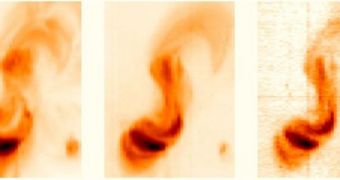Coronal mass ejections (CME) are some of the most interesting and important phenomena going on on the surface of our Sun. As the years pass, astronomers and astrophysicists gain a deeper and deeper understanding of how these structures form and develop. This is of tremendous importance, as the CME have the potential to create secondary events that can fry power grids and satellites, radiate our planet, and jeopardize the lives of people working aboard the International Space Station (ISS). It would now appear that one of the keys to learning more of CME is analyzing magnetic flux ropes.
As some experts put it, almost nothing happens on the Sun without the presence of very strong magnetic fields. These structures can take on various shapes and sizes, and they can trigger solar tsunamis, sunspots, coronal mass emissions and so on. Given the perilous nature of some of these events, it stands to reason that experts want to learn more about how they form. That is why scientists at the University College London (UCL), in the United Kingdom, used the Hinode satellite to gain more data on how these extremely large magnetic fields form.
Magnetic flux ropes are a type of field that can be readily detected in the interplanetary space as CME approach our planet. This led experts to assume that they play an important role in stimulating the emissions. “Magnetic flux ropes have been observed in interplanetary space for many years now and they are widely invoked in theoretical descriptions of how CME are produced. We now need observations to confirm or reject the existence of flux ropes in the solar atmosphere before an eruption takes place to see whether our theories are correct,” explains UCL expert Dr Lucie Green, the lead researcher on the investigation.
“Flux ropes are thought to play a vital role in the evolution of the magnetic field of the Sun. However, the physics of flux ropes is applied across the Universe. For example, a solar physics model of flux rope ejection was recently used to explain the jets driven by the accretion disks around the supermassive black holes found in the center of galaxies,” the scientist adds. Details of the work conducted at UCL were presented today, April 12, at the RAS National Astronomy Meeting, in Glasgow, Scotland, AlphaGalileo reports.

 14 DAY TRIAL //
14 DAY TRIAL //